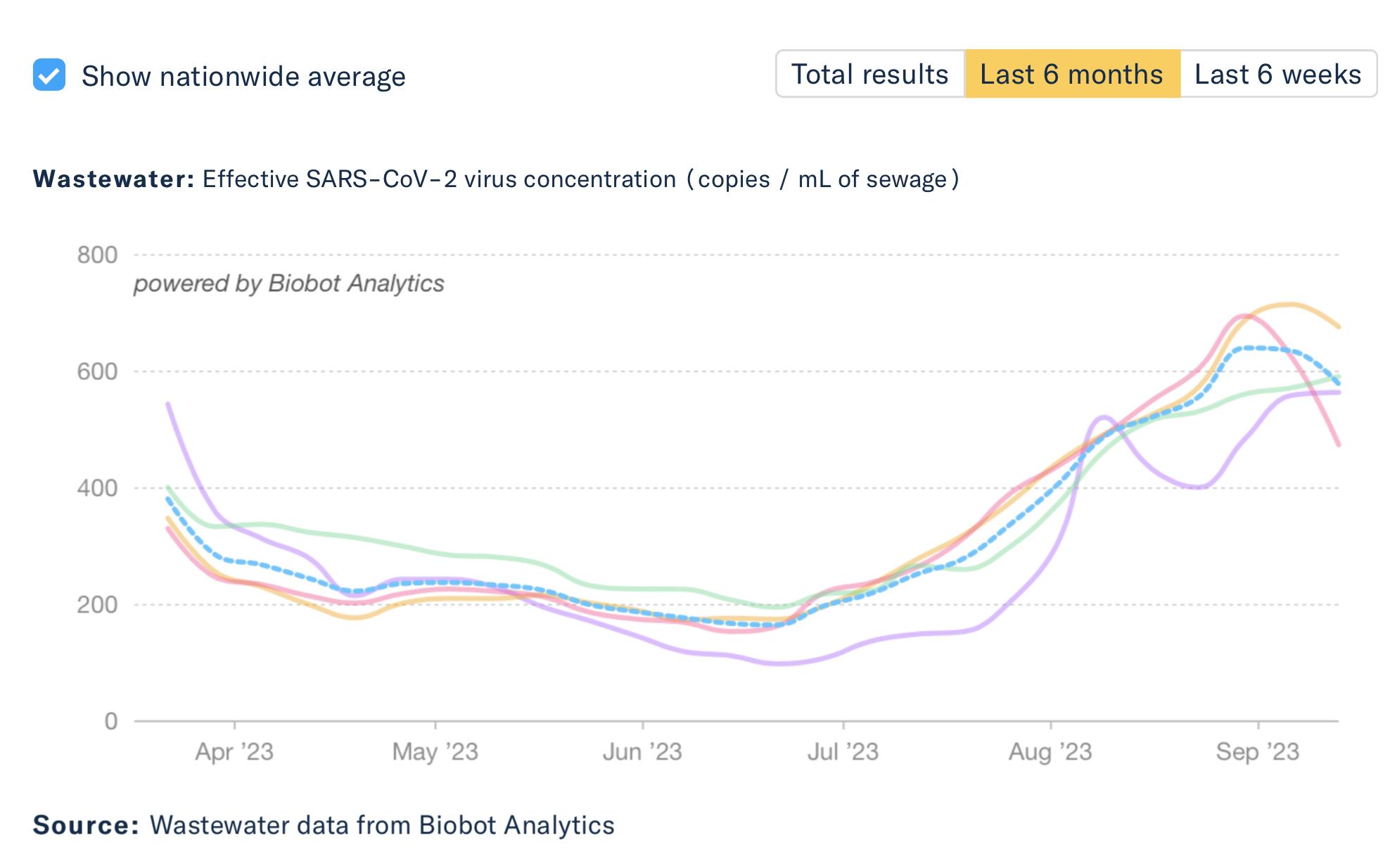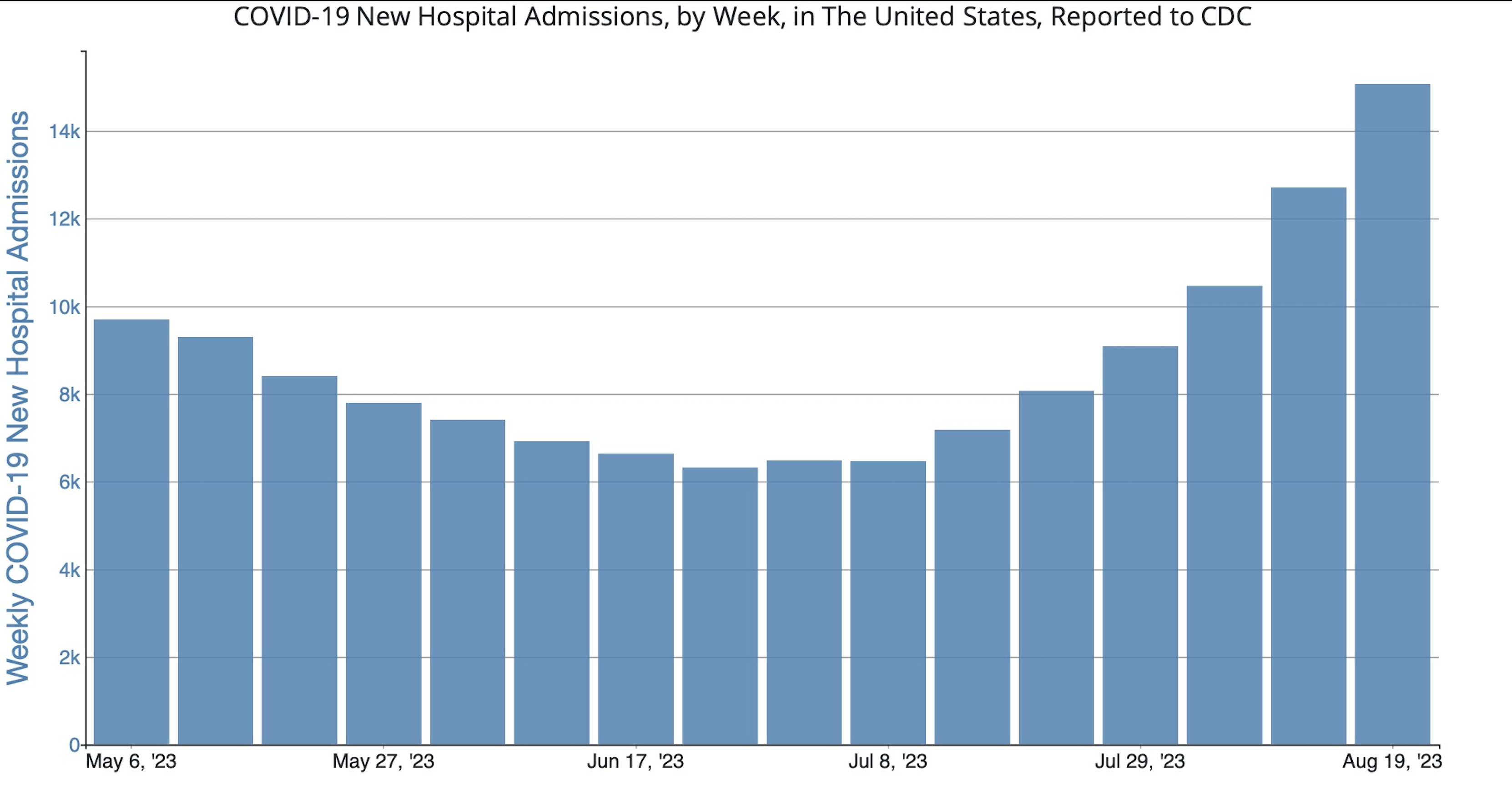Public tracking of COVID-19 cases has been a cornerstone of understanding disease burden and variant waves throughout the pandemic. Shifts in testing behavior and public health reporting, however, have caused reported case counts to be less representative of true community viral circulation. One technology that may better illustrate current SARS-CoV-2 infection trends is wastewater monitoring – measuring viral RNA in sewage water (typically reported as viral copies/milliliter or copies/gram of sewage).
Systems such as CDC’s National Wastewater Surveillance System, created in September 2020 in partnership with local health departments, can provide national, regional and even individual sewershed-level measures of infection (Kirby, January 2022). Additionally, CDC has created a dashboard with up-to-date data from the NWSS that can be used "as an early warning that levels of infections may be increasing or decreasing in your community." Accuracy of wastewater monitoring appears high – wastewater RNA levels paralleled clinical case trends in the community during times of higher testing frequency (Varkila, July 2023).
Benefits of Wastewater Surveillance
Importantly, wastewater monitoring is not dependent on changes in individual testing behavior or access and can thus capture otherwise undetected cases and offer scalability in lower-resourced settings. Another potential benefit of wastewater monitoring is serving as a component of an early detection system for changes in SARS-CoV-2 variants and emergence of mutations that contribute to immune evasion. This includes the ability to track and map cases across sewersheds and understand paths of new community spread. Multiple organizations (including Biobot, WastewaterSCAN and Mathematica) and some local health departments have developed wastewater data visualization tools (Naughton, January 2023).
Wastewater surveillance has also been proposed as a method to detect chronic infections, including in heavily immunocompromised people, which may be characterized by “cryptic lineages” that demonstrate characteristics sequences (e.g., spike protein mutation Q498H/Y) that are not typical of acute infections and accumulate over time (Gregory, October 2022; Smyth, February 2022).
Potential Drawbacks
There are notable limitations of wastewater monitoring data. For example, absolute RNA values may be affected by the sewage’s quality and flow rates and the RNA extraction process (thus requiring careful normalization). Additionally, changes in population immunity (e.g., controlling infections more rapidly) may affect per-person shedding and estimation of case numbers over time. Furthermore, RNA detection does not discriminate between shedding related to active infections and remnant viral fragments of resolved infection, and procedures may not reliably distinguish human from wild or domestic animal RNA shedding into sewage without more specific confirmatory testing.
A Role That Will Continue to Grow?
In the current climate of lower levels of SARS-CoV-2 testing and reporting, wastewater monitoring has emerged as a promising method for less biased monitoring of changes in the number and nature of infections in a community. Indeed, wastewater trackers, including the NWSS dashboard, documented rising SARS-CoV-2 detection across much of the U.S. beginning in late June 2023, which preceded the steady increase in COVID-19-related emergency visits and hospitalizations that began in mid-July 2023.

Image source: Biobot Analytics

Image source: CDC COVID Data Tracker
As SARS-CoV-2 variants continue to evolve heading into fall 2023, wastewater monitoring may continue to serve as a useful pandemic preparedness tool to surveil for novel sublineages that threaten population health.

